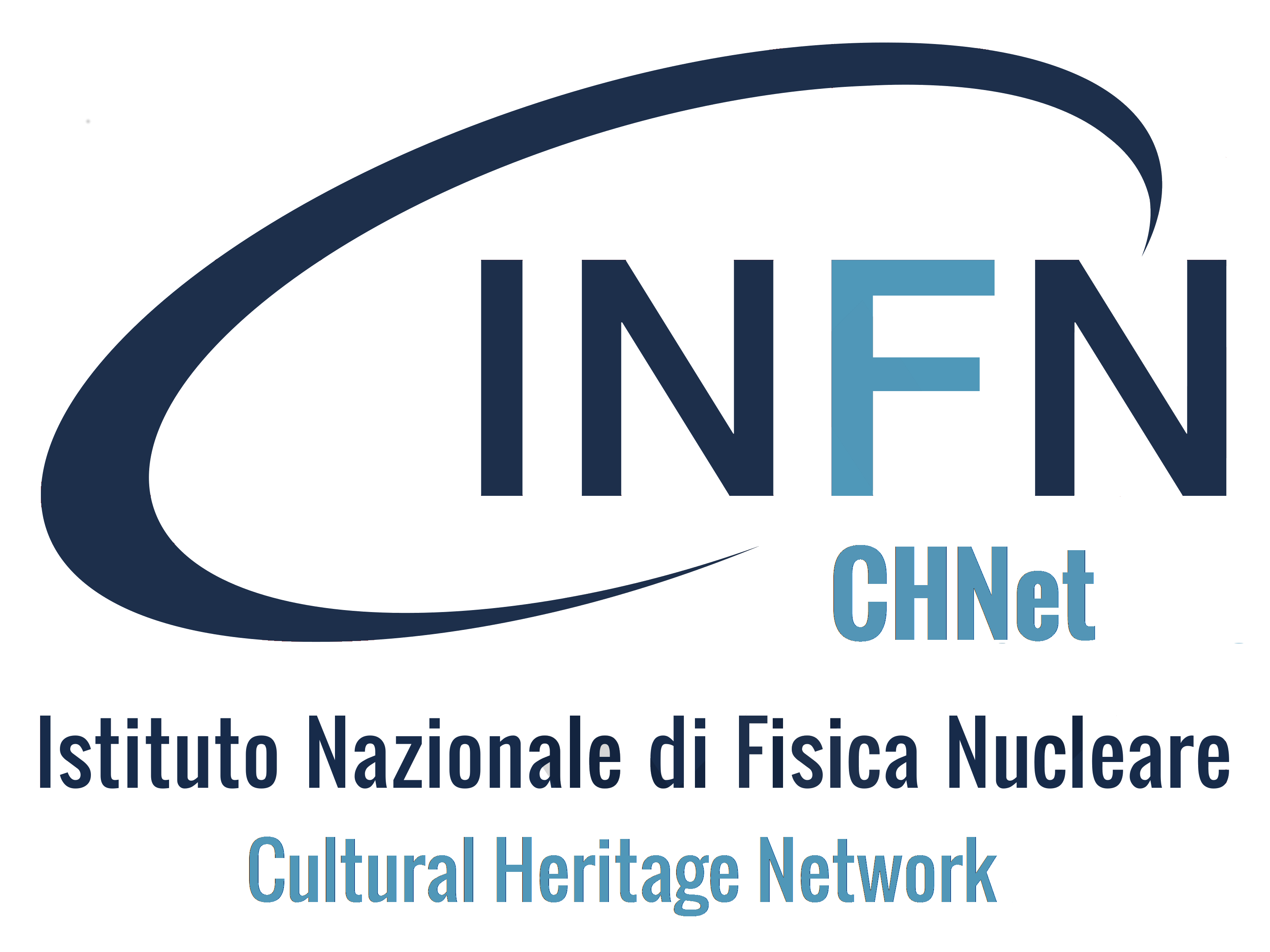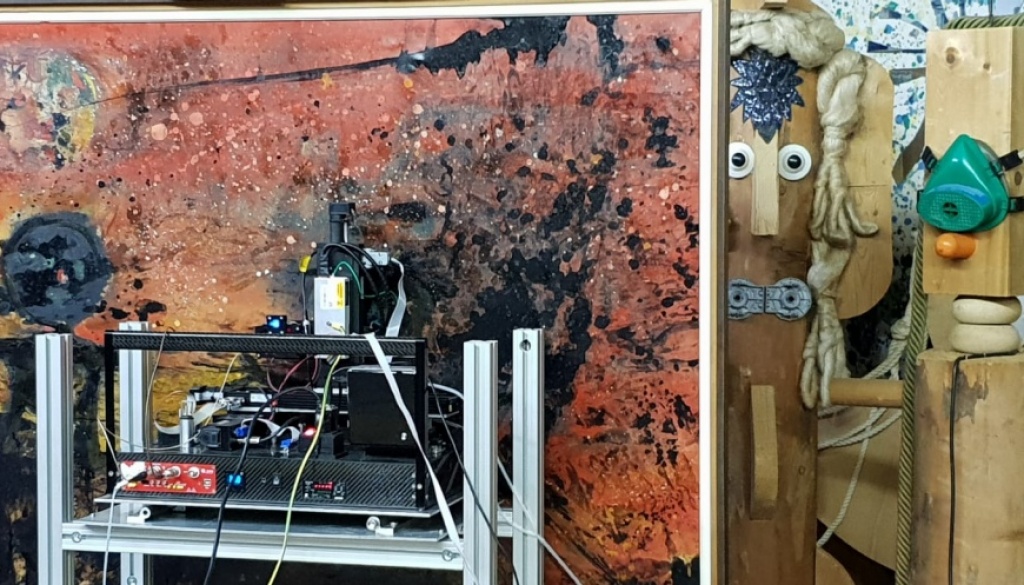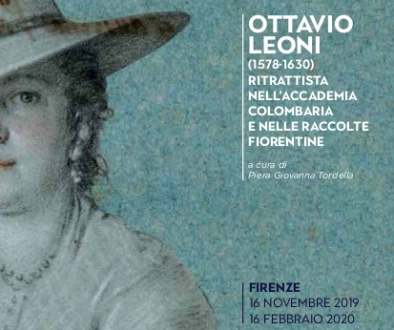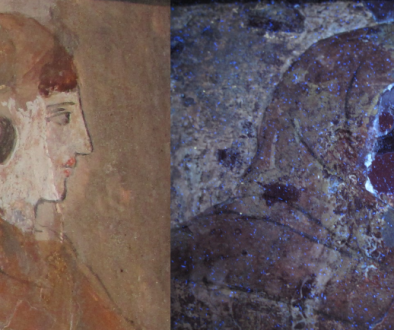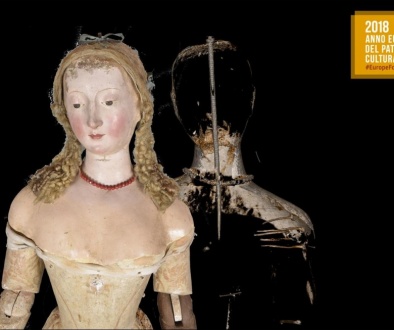Nuclear physics analyses Enrico Baj’s Nuclear Art
The CHNet unit of Florence is facing a special challenge in the Archivio Baj in Vergiate.
The National Institute of Nuclear Physics is analyzing for the first time what Enrico Baj defined “Nuclear Art”. The project, presented by the Art Historian Luca Bochicchio in the framework of the national calls of E-RIHS.it and involving also the CNR_ISTM of Perugia, aims at characterizing dyes and binders used by Baj and reconstructing the compositional process of its paintings.
Enrico Baj (Milano 1924-Vergiate 2003) was one of the founders of the nuclear art movement in 1951. The group was inspired by atomic energy, which had demonstrated its destroying power with Hiroshima e Nagasaki, but in civilian uses was promising safe and clean renewable energy.
In his later painting and collage works he gave the name ‘heavy water’ to the enamel paint and distilled water emulsion he used.
Despite the scientific research was for the artist a fundamental reference term for his nuclear poetics, Baj’s paintings have never been approached from a chemical-physical point of view. The “Baj Nucleare” project aims to fill this gap and provide for the first time a range of technical data from the analysis of the materials used by Enrico Baj in his nuclear period.
